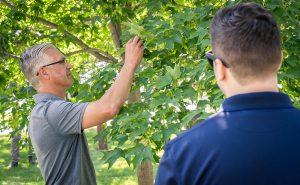Preventing & Controlling Abiotic Tree Disorders in Minnesota
There are two types of tree disorders. Disorders caused by living things such as insects, bacteria, fungi, and animals are called biotic. Conditions caused by non-living things, such as drought, physical injury, or extreme cold, are referred to as “abiotic.” Our ISA Certified Arborists can correctly identify and provide treatment options for abiotic disorders commonly found in the Minneapolis and St. Paul metro.
Abiotic disorders, such as drought stress, often impact several plant types in one area; whereas living organisms, such as pests and diseases, will target one species. Our experts use a comprehensive approach to diagnose and treat current tree health issues and prevent future problems. Schedule a consultation today with one of our arborists to evaluate your trees for abiotic disorders!
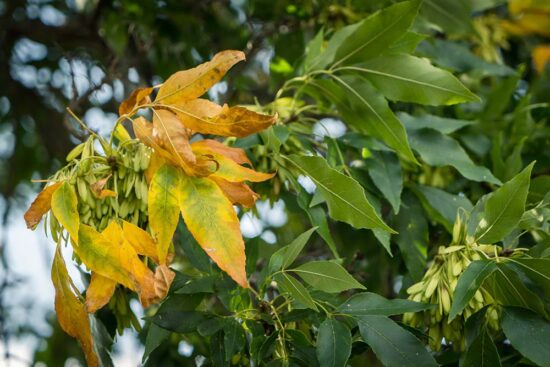
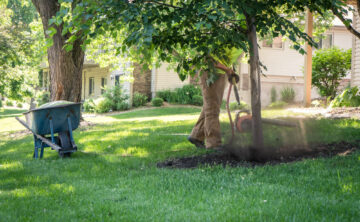
What can you expect from our abiotic tree disorder services?
First, one of our tree care experts will examine your landscape and properly diagnose common plant health issues, including abiotic disorders, on your property. Biotic and abiotic factors often contribute to tree problems, and treatments won’t do any good if the root causes aren’t addressed. To properly treat abiotic disorders, one of our experts will determine all of the factors contributing to the problem. For example, a tree that is stressed from growing in poor soil may become infested with a pest. Both issues must be treated for the tree to recover and thrive.
The treatment needed for an abiotic condition can vary greatly and is determined by many factors, including the species, location, and the current health of your tree. Some of the treatments used for treating abiotic disorders include:
- Testing soil and fertilizing accordingly
- Collecting and testing samples to identify and treat pests or diseases
- Diagnosing and treating any additional insect or disease issues
- Aerating compacted soil with an air tool to “fluff” it without damaging roots
- Pruning to help a tree recover from damage caused by storms, road salt, or extreme temperatures
Why choose the experts from Rainbow Treecare?
We are Minnesota’s premier licensed and insured tree experts. With over 45 ISA Certified Arborists on staff, we are highly skilled in assessing and performing the services that enhance the health and longevity of your trees. Many factors contribute to a tree’s overall health, including site-specific concerns such as nutrient levels or compacted soil. Our tree experts will address the bigger picture to provide the best treatment outcomes. Additionally, one of our core values is safety. You can rest easy knowing our team will perform all services while taking every precaution to keep our staff, bystanders, and your property safe.
Additional frequently asked questions about abiotic disorders
Improper tree choice for your zone or location, improper planting, root issues, and poor soil are the most common causes of abiotic disorders. A major symptom to look for is stress throughout the entire canopy and a lack of visible insects or disease. Specific abiotic disorders include the following:
- Girdling roots, where improper planting led to roots growing tightly around the tree, effectively choking it
- Compacted soil from foot traffic or construction activity, which negatively impacts tree roots
- Root damage caused by construction
- Stress caused by poor planting location and insufficient soil for the tree to grow
- Physical damage from storms, mower impact, or road salt
- Prolonged overwatering or drought
- Poor soil conditions, including a lack of soil nutrients
- Extreme temperatures
The most effective way to prevent abiotic tree problems is to choose the best trees for your yard and plant them properly. Following proper tree care methods, including watering and fertilization, is also essential. Other prevention tips include:
- Prune your trees regularly to provide a strong structure and address physical damage from storms or other causes
- Prevent root and soil issues through proper planting
- Adequately plan when planting a new tree for branches to grow above ground, as well as roots below
- Follow our best practices on tree planting to avoid planting too deeply
- Never dig in the root zone, as this will damage tree roots
- Protect the root zone during construction to avoid compacting the soil
- Never “volcano mulch” by piling mulch against the tree’s trunk, where the long-term moisture can cause the bark to rot
- Salt damage can be prevented by wrapping trees and shrubs in burlap, leaving air space between the fabric and the leaves.
- Nutrient deficiencies can be avoided using correctly installed mulch rings and compost to provide a long-term source of readily available nutrients.
When a tree is planted incorrectly or not allowed adequate root space, there is a potential for some roots to start growing around the trunk of the tree instead of fanning outward. As the tree grows, the roots gradually get tighter around the tree’s trunk, preventing the flow of water and nutrients absorbed by the roots from moving up into the woody and leafy parts of the tree. This girdles (chokes) the tree, causing it to die. This problem is best diagnosed by one of our certified arborists, who can assess girdling roots and determine if they can be treated.
Schedule your service today!
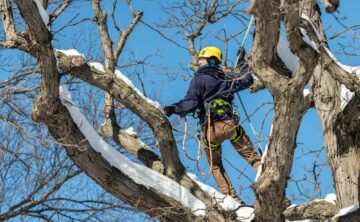
Five Reasons To Prune Your Trees This Winter
Pruning is a key part of keeping trees healthy and safe to live with in your Minnesota yard. It’s also one of the only landscape
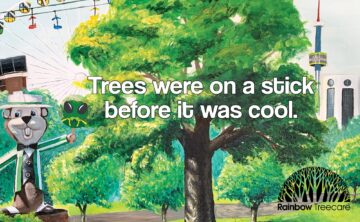
Minnesota State Fair Tree Facts
Trees might not be the first thing you think of when you look back on your visits to the State Fair. For many of us,

Four Famous American Trees for the 4th of July
Happy Independence Day! This patriotic holiday is an excellent opportunity to look at some famous American trees. From record holders to historical myths, these trees
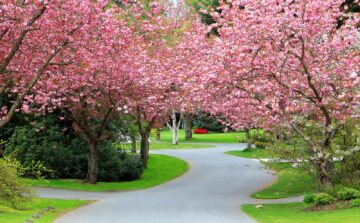
Spring Tree Care Checklist for Minnesota Homeowners
Welcome your trees back from their winter slumber with a little love and care. Spring is an important time for the trees and shrubs in

